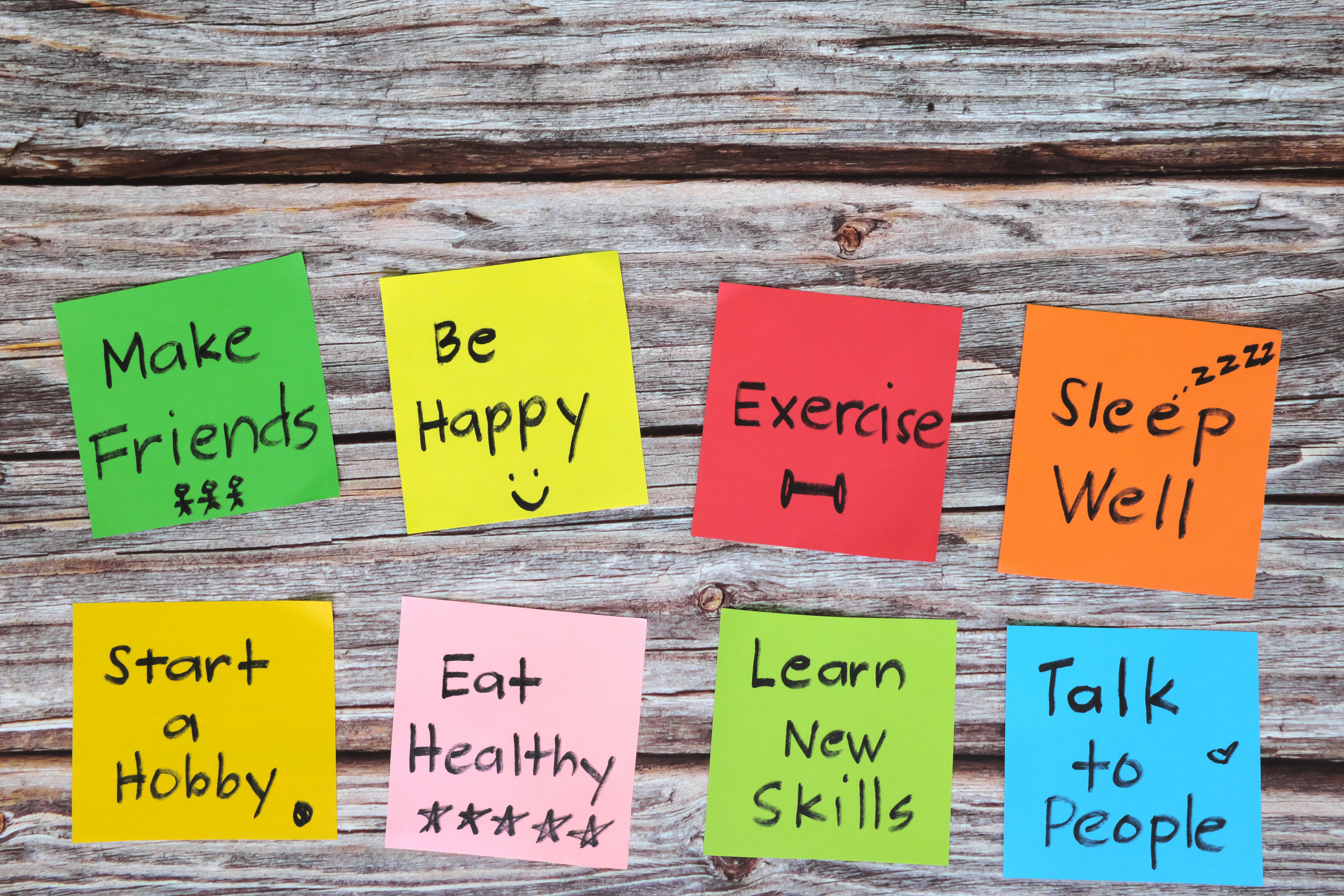
8 Tips for a Better Work-Life Balance
How do we consistently create the right work-life balance in our lives between fitting in daily work, play, sleep, and spending time with loved ones?
Finding time for everything we want to do is a challenging balancing act that can sometimes feel like a task best suited to professional jugglers. So challenging, in fact, that the quest to find equilibrium in our chaotic lives has many of us ringing up the nearest life coach.
But before you go calling in the professionals, we encourage you to give yourself a break, take a breath, and read this article: we will take a closer look at the concept of work-life balance and offer some helpful tips on how you can create more equilibrium in your life.
What is Work-Life Balance and Why is it so Important?
Work-life balance isn’t about spending the exact same amount of time at work as you do with your friends or family. Rather, it is about finding a healthy balance between your personal life and your professional priorities. And it’s a balance each person has to find for themselves.
Healthy work-life balance means you can be dedicated to your job, while also taking the time to enjoy other things that are important to you in life, like hobbies, physical activities, and time with friends and family.
The pandemic and the Great Resignation ushered in the rise of remote work–a shift that has dismantled the generational belief that we need to work long hours in order to achieve success and recognition.
There is now a greater awareness that spending too much time working, and not enough time with friends and family or doing the things you enjoy can lead to burnout and other serious mental health issues. And while burnout is not considered a disease, it has now been included in the World Health Organization’s most recent revision of the ICD 11 as an occupational phenomenon.
8 Tips for Improving Your Work-Life Balance

To improve your work-life balance, you need to get clear about your personal priorities and use your work time wisely. Here are some tips to get things moving in the right direction:
1. Prioritize time with friends and family

Reciprocal relationships bring meaning to our lives by providing us with a sense of connection, acceptance, support, and care. And your friendships matter – probably far more than you think. Social relationships are widely recognized as an important determinant of health. Research has shown that spending time connecting with others lowers your stress hormones.
By creating time to connect in positive ways with your spouse, your children, and your friends, you are strengthening relationships that will give back to you in so many ways. It is essentially an investment in your own wellness. Here are some great ways to prioritize the important people in your life:
- Meeting with a friend for a post work drink
- Having lunch with a work colleague where you share on life outside of work
- Creating a standing weekly arrangement for a walk or exercise mission with a friend
- Having a weekly check in with your parents
- Making a standing ‘date night’ arrangement with your spouse
Remember, there will always be more work to attend to, but the time we get to spend with our loved ones is fleeting.
2. Schedule things that make you happy before and after work

Scheduling an activity that makes you happy after work can be the perfect antidote to a long day in the office. This might include some exercise, like a short jog to let go of your day’s stress and tap into some natural endorphins, or getting up early for a yoga class to get into a positive state of ‘flow’ before work. You could also opt for something artistic, like joining a local choir or signing up for that painting class you’ve been wanting to take.
Consider including your friends in your plans to keep you accountable in your pursuit of equilibrium. Friends can make for good sounding boards as you share your daily struggles, successes, and future plans. Combining human connection with an activity that makes you happy is a win-win situation.
3. Plan a cool vacation

While stress in the workplace is seen as a key factor in burnout, it is the inability to detach from this stress that is even more damaging.
Taking vacations can force you to detach from your job. Vacations give you time to rest, relax, and restore your energy. Ultimately, this makes you more resilient and productive when you return to work.
Vacations are also the perfect opportunity to spend quality time with your family or friends, enjoy your hobbies, or try something new.
Travel is a great stress reliever and has been proven to lower your cortisol levels (stress hormone). It invites an acceptance of the fact that you can’t simply ‘fix’ all your problems by going to work the next day. Nothing gives you better perspective on your job than being on a beach miles away from it!
4. Make regular breaks a part of your workday
When you start to have difficulty concentrating or making decisions, it can be a sign that you are suffering from mental fatigue. One easy way to address this is by taking short regular breaks during your workday.
Short breaks are known to help stimulate creativity and offer the brain a chance to explore new ideas and solutions without us actively thinking about the problem.
Find a rhythm that works for you, schedule the breaks, and stick to them. The Pomodoro Technique, which alternates 25-minute work sessions with 5-minute breaks, is a great time-management tool that can help achieve this. All you need is a Pomodoro timer to get started.
While a few minutes may not sound like much time, if you use your breaks effectively you will still experience significant benefits. Try switching off message alerts on your electronic devices and really take the time for yourself.
On your break, you could do something restorative, like sitting in a comfy chair while practicing gentle breathing or meditation, or going for a stroll. When you return to the work task at hand, you will be mentally fresh and better able to focus.
5. Set boundaries between work and private life

Something as simple as creating a buffer between your work and home life is an effective tool to keep the different parts of your life in perspective and in proportion.
With the rise of mobile technology and online communication platforms, it has become increasingly challenging to leave work at work when returning home. Drawing a line between work and private life can be very tricky and requires some planning and communication.
Because setting boundaries can be so challenging, here are a few suggestions:
- Switch off all work-related message alerts once your work-day hours are over (mute those pesky WhatsApp group chats while you’re at it).
- Try not to read or respond to work emails outside of office hours.
- If you don’t work from home, use the commute home to consciously switch off from work. This is the time to listen to that podcast or read that book!
- If you work from home, schedule a daily activity that allows you to mark the end of your work day. Exercise is always a good option. The responsibility of owning a dog that needs its daily walk is a surefire way to get you out of the house!
Remember to communicate your boundaries with your employer and colleagues to remove any expectation for you to tend to work-related matters outside of your office hours.
Being valued by your peers starts with valuing yourself. Be upfront and explicit in your communication that you intend to live a healthy balanced life, and people will respect it.
6. Prioritize your health
Remember that looking after both the mental and physical aspects of your well-being is important, as it allows you to function to the best of your ability at work and at home.
Schedule your annual check-ups and don’t delay visiting a healthcare professional if there is something that concerns you. Early detection of diseases such as elevated cholesterol or diabetes will allow you to make less-invasive lifestyle changes to combat potential diseases and promote your health.
Make use of your local mental health care services if you feel you might be suffering from burnout, depression, or any other mental health issues. Prioritizing our mental health has become an important topic of conversation these days, and there is much less of a stigma attached to seeking professional, ongoing support to deal with our demanding lives.
Take active steps to improve your physical health as well. Eating a balanced diet and exercising regularly are simple ways in which you can support your health daily.
7. Find a job that you love

According to research by Annie McKee, author of How to Be Happy at Work, finding a job that you love has many benefits.
People who enjoy what they do at work are likely to be more creative and productive in their workplace. As most of us spend so much time at work, it makes sense that doing something enjoyable will bring increased personal fulfillment and reward.
Not everyone can work their dream job however, so another approach is to find something within your job that you really enjoy–something that brings you personal meaning. Be conscious about trying to create more opportunities to engage in this aspect of your work, and affirm these positive experiences.
Finally, practicing daily gratitude can help us appreciate the things we like about our jobs, rather than focusing on the things we don’t.
8. Set goals and priorities for your life
Setting clear goals and priorities for both work and your personal life gives you a framework to help guide your decisions. Understanding the motivation behind your goals means you will be more likely to fulfill them.
Write your goals down and keep them SMART (Specific, Measurable, Attainable, Realistic, and Timely). Reflect on your goals often, celebrate your successes, and remember to stay connected to the motivation behind your goals and priorities. And don’t forget to create implementation intentions, defining the concrete steps you’ll follow to achieve each goal.
This is Not a ‘One-Size Fits All’ Solution
It’s important to remember that work-life balance looks different for everyone. How your time is divided will depend on many factors, including the type of job you have, your family responsibilities, your temperament, and your personal life goals.
Discovering what your own work-life balance will look like is about bringing awareness and flexibility to your daily routine. It requires regular self check-ins to see how you are really doing. With time and practice, you’ll be able to notice immediately when you are moving towards imbalance, and be able to take the necessary steps to right the ship.
Conclusion
As you take steps to find your own ideal balance, there will no doubt be some challenging adjustments ahead. This can mean a tough conversation with a new boss or declining after-work drinks with work colleagues in order to pursue something healthier; both are manageable situations to deal with if you remain focused on your goal.
The initial effort required to reassess your priorities, set some new goals, and define what work-lIfe balance means to you is well worth it. You’ll be rewarded with all the happiness and harmony that comes with a healthy equilibrium. Good luck!





